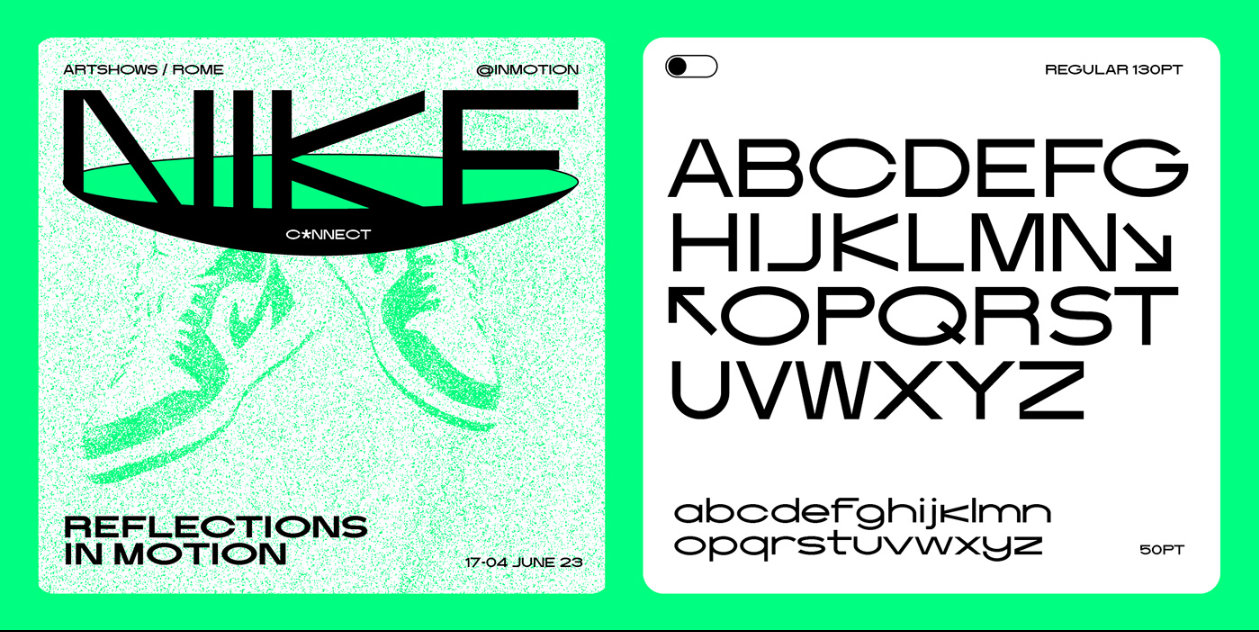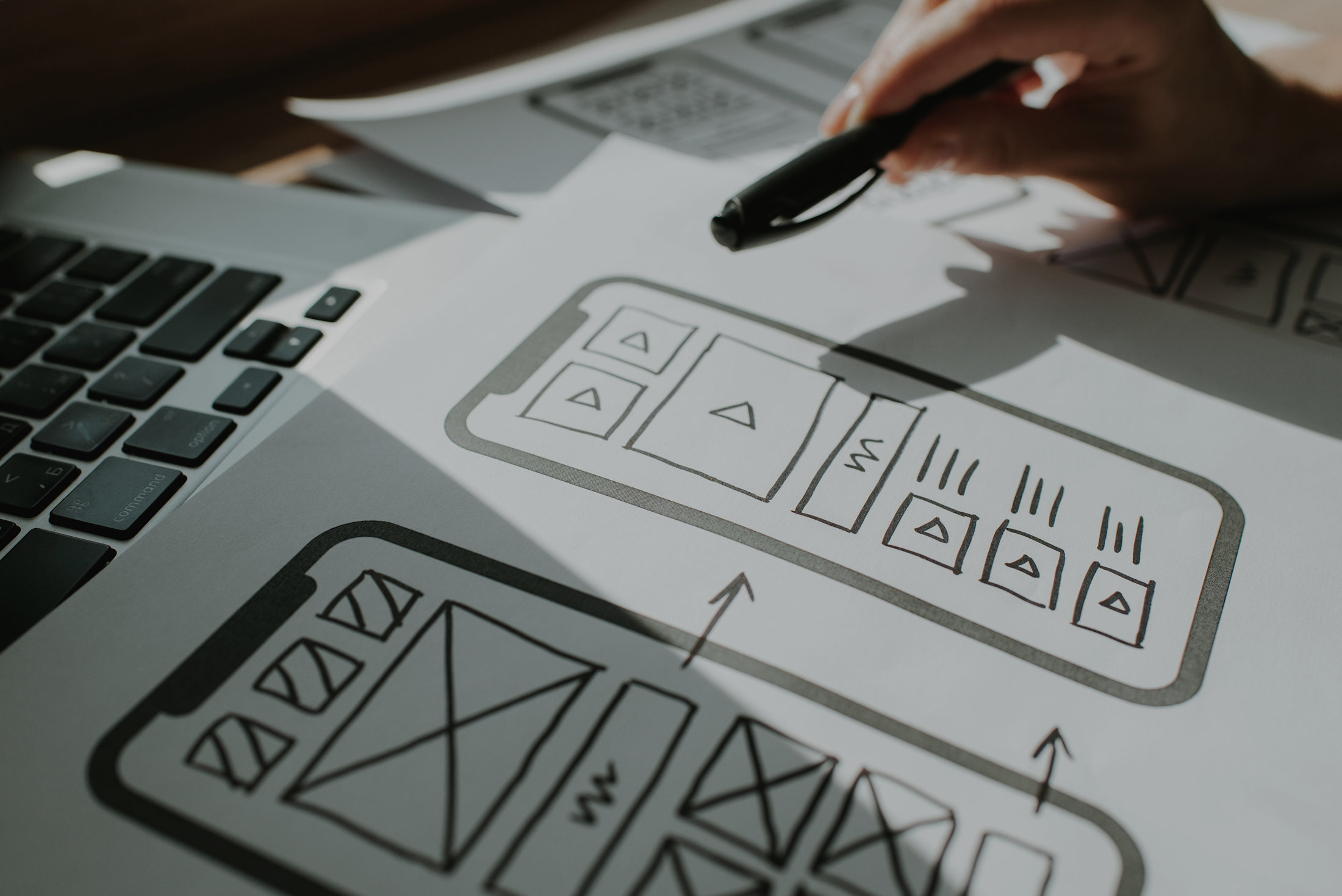Crafting the Future: The top 7 graphic design trends shaping branding in 2023
As we navigate through 2023, the landscape of graphic design continues to evolve at a rapid pace, influenced by cultural shifts, technological advancements, and consumer behaviors. Brands are not just competing for market share; they are vying for attention, connection, and memorability in a digital-first world. This year, we’re seeing a resurgence of some nostalgic elements reimagined for the modern eye, alongside the embrace of bold new aesthetics that push the boundaries of the traditional branding playbook. From the minimalism of vintage-inspired designs to the bold frontiers of the Metaverse, these top 7 graphic design trends are setting the tone for how brands communicate their identity and values. Each trend not only reflects the current zeitgeist but also offers a unique set of opportunities for brands to tell their story in a way that is visually compelling and resonant with their audience. Let’s dive into each of the top graphic design trends for branding in 2023.
Minimal Vintage
This trend revives classic design elements from the past but presents them with a minimalist approach. The goal is to evoke nostalgia while keeping the design clean and uncluttered. Brands may use this style to signify craftsmanship and timelessness, utilizing muted color palettes and simplified illustrations that pay homage to the past without overwhelming the senses. It’s a balancing act between old and new, aiming to appeal to those who appreciate the elegance of simplicity and the charm of yesteryear.
Work by Tahmina Azim, tahmina-azim.com
Explore the full project here.
Photographic Branding
High-quality, authentic photographs are becoming the centerpiece of branding efforts, moving away from generic stock images. The emphasis is on storytelling through imagery that captures the brand’s essence and values. This approach can create a strong emotional connection with the audience by showcasing real-life scenarios, products in action, or the people behind the brand. It’s about creating a visual narrative that aligns with the brand’s message and feels both personal and relatable.
Work by FAENA Studio. www.faena-studio.org
Explore the full project here.
The Return of the Sans Serif
Sans serif typefaces are making a comeback, favored for their readability and modern aesthetics. Brands are embracing this trend for both digital and print media, favoring clean lines and open spaces that enhance legibility. This trend reflects the digital-first approach of many companies, with an emphasis on clarity and functionality. The return of the sans serif speaks to a desire for directness and efficiency in communication.
Work by TT Commons™ Pro
Explore the full project here.
Rich Jewel Colours
Bold and saturated jewel tones like emerald green, sapphire blue, and amethyst purple are being used to convey luxury and exclusivity. These colors are often paired with high-quality materials in branding materials, suggesting opulence and premium status. This trend is particularly popular in branding for high-end products and services, where color can instantly communicate a sense of indulgence and sophistication.
Distorted Type
Distorted type challenges traditional typography rules by stretching, skewing, and warping text to create unique and eye-catching designs. This approach is not just about being different; it’s about grabbing attention and making a statement. It’s particularly effective for brands that want to stand out in crowded markets and convey a sense of innovation or rebellion.
Work by iframe desiegn
Explore the full project here.
Liquid Gradients
Fluid and multi-colored gradients are being used to add depth and dimension to flat designs. This trend offers a modern twist on the gradients of the past, with smooth transitions that mimic natural light and movement. Brands use liquid gradients to suggest innovation and to give a fresh, contemporary feel to their visual identity. This style is versatile and can be adapted to various contexts, from app interfaces to product packaging.
Metaverse
The Metaverse trend in graphic design reflects the growing intersection between our physical reality and digital experiences. This trend is characterized by the creation of branding materials that evoke a sense of immersion into a virtual world. Designers leverage 3D elements, digital textures, and interactive components to craft brand identities that are not just seen but experienced. These designs often feature virtual reality environments, augmented reality interfaces, and other elements of a digital ecosystem that communicate a brand’s forward-thinking and innovative nature. By utilizing the Metaverse aesthetic, brands can position themselves at the cutting edge of technology, appealing to a tech-savvy audience that values the convergence of digital and physical spaces. The key to this trend is crafting a visual language that transcends traditional media and offers a glimpse into a future where brand interactions are multi-dimensional and deeply integrated with our daily lives.
Work by VITALIY VOROBEY
Explore the full project here.
Responsive design: ensuring your website looks great on all devices
In today's digitally connected world, websites are the primary gateway for businesses to engage with their target audience. It's not enough to have a visually appealing website; it also needs to provide an optimal user experience across a variety of devices. Enter responsive design, a vital approach to web development that ensures your website looks great on all devices, whether it's a desktop computer, a smartphone, or a tablet. In this article, we'll explore the importance of responsive design and how it can benefit your business.
The multidevice world
In the past, web designers primarily focused on creating websites for desktop computers, with fixed layouts and dimensions. However, with the rapid proliferation of mobile devices, it became evident that a one-size-fits-all approach was no longer effective.
Today, people access websites from a wide range of devices, including smartphones, tablets, laptops, and desktop computers. Each of these devices has different screen sizes and resolutions, making it crucial for your website to adapt seamlessly to provide an excellent user experience on each one.
What is responsive design?
Responsive design is an approach to web development that ensures a website adapts and responds to the user's device. It involves creating a flexible layout and using CSS media queries to adjust the design based on the screen size and orientation. This approach allows a single website to function optimally on any device, eliminating the need for separate mobile and desktop versions.
The benefits of responsive design
- Enhanced User Experience: Responsive design ensures that your website provides a consistent and user-friendly experience, regardless of the device being used. This is crucial for keeping visitors engaged and encouraging them to explore your content.
- Improved SEO: Search engines like Google prioritize mobile-friendly websites in their rankings. By having a responsive design, your website is more likely to rank higher in search results, increasing its visibility to potential visitors.
- Cost-Effective: Developing and maintaining a separate mobile version of your website can be costly and time-consuming. Responsive design eliminates the need for multiple versions, saving you both time and money.
- Increased Conversions: A seamless user experience on all devices can lead to higher conversion rates. If visitors can easily navigate and interact with your site, they're more likely to take the desired actions, whether it's making a purchase, filling out a contact form, or signing up for a newsletter.
- Easier Maintenance: Managing a single responsive website is more efficient than maintaining multiple versions. Updates and content changes are applied uniformly across all devices, ensuring consistency.
- Adaptability to Future Devices: As new devices with varying screen sizes and resolutions continue to emerge, a responsive website can adapt to them without the need for a complete redesign.
Designing responsively
When implementing responsive design, here are some key considerations:
- Mobile-First Approach: Consider designing for mobile devices first and then scaling up to larger screens. This approach ensures that the most critical content and features are prioritized for mobile users.
- Fluid Grids: Use relative units like percentages for layout and elements rather than fixed units like pixels. This allows content to adjust proportionally to screen size.
- Flexible Images: Employ CSS techniques to make images flexible and adapt to various screen sizes without losing quality or cropping.
- Testing: Regularly test your website on different devices and browsers to ensure it displays correctly and functions smoothly.
In conclusion, responsive design is not just a trend; it's a necessity in today's multidevice world. It's a powerful tool for enhancing user experience, improving SEO, and increasing conversions. By adopting responsive design principles, your website will look great and function seamlessly on all devices, ensuring you don't miss out on valuable opportunities to connect with your audience.
The art of rebranding: When and how to refresh your brand
In the ever-evolving world of business, the only constant is change. As your company grows, market dynamics shift, and consumer expectations evolve, there may come a time when you need to consider rebranding. Rebranding is not just about changing your logo or slogan; it's a comprehensive process that involves reshaping your brand's identity, message, and strategy to stay relevant and resonate with your audience. In this article, we'll delve into the art of rebranding, exploring when it's the right time to refresh your brand and the steps involved in a successful rebranding.
The signs it's time to rebrand
- Outdated visual identity: If your logo, color scheme, or overall visual identity looks like it's stuck in another era, it might be time for a makeover. An outdated image can make your brand seem irrelevant to modern consumers.
- Change in audience: As your target audience shifts or expands, your brand should evolve to address their needs, preferences, and values. Failing to do so can lead to a disconnect with your market.
- Reputation challenges: A tarnished reputation can be a compelling reason to rebrand. It allows you to distance your brand from past mistakes and start fresh with a new image.
- Market expansion: When entering new markets or offering new products or services, rebranding can help communicate your company's evolution and capture a broader customer base.
- Mergers and acquisitions: Combining with another company often necessitates rebranding to create a cohesive and unified identity.
- Differentiation: If your brand has lost its distinctiveness and blends in with the competition, rebranding can help you stand out and regain a competitive edge.
The steps to successful rebranding
- Self-reflection: Define your purpose and values
Before diving into design and marketing, take a step back to reflect on your brand's core purpose and values. What does your brand stand for, and what do you want to achieve? A successful rebrand should be built on a strong foundation.
- Market research: Understand your audience
In-depth market research is critical to understanding your audience's current preferences, behaviors, and expectations. This data will guide your rebranding decisions.
- Set clear goals: What do you want to achieve?
Outline your rebranding objectives. Are you looking to attract a new audience, recover from a crisis, or increase brand recognition? Clear goals will drive your strategy.
- Creative strategy: Visual identity and messaging
Develop a new visual identity, including a logo, color palette, typography, and design principles. Your messaging, including your tagline and brand story, should align with your rebranding goals.
- Implement the changes gradually
A complete brand overhaul can be overwhelming for your audience. Consider a phased approach to ease the transition, especially if your brand has strong recognition.
- Communicate the change
Your audience needs to know about the rebrand and understand why it's happening. Use various communication channels to inform, educate, and engage with your customers during the transition.
- Involve your team
Your employees should be brand ambassadors. Keep them informed and excited about the rebranding process to ensure consistency in their interactions with customers.
- Monitor and adjust
After the rebrand, track your brand's performance and gather feedback. Be prepared to make adjustments based on data and customer reactions.
- Reveal your new brand to the world
When you're confident in your rebrand's success, launch it with a splash. This might include a brand reveal event, social media campaigns, and press releases.
- Consistency is key
Maintain consistency across all brand touchpoints to solidify the new brand identity and deliver a unified message to your audience.
Conclusion: A fresh start
Rebranding is a strategic move that can breathe new life into your business and help you stay relevant and competitive in a rapidly changing world. By recognizing the signs that it's time for a change and following a thoughtful rebranding process, you can create a fresh and exciting image for your brand that resonates with your audience and sets the stage for future success. Rebranding is not just a makeover; it's an opportunity for a fresh start and a stronger brand identity.
The digital face of your business: why a well-designed website is essential
In the age of the internet, your business's first impression is often made through its website. Whether you're a multinational corporation or a local boutique, a well-designed website is no longer a luxury; it's a fundamental necessity. The digital face of your business, your website, plays a pivotal role in shaping your brand's identity and influencing the way your audience perceives you. Let's explore why having a well-designed website is essential for running a successful business in the modern world.
Credibility and Trust
Imagine you're looking for a product or service, and you stumble upon a website that's poorly designed, difficult to navigate, and appears outdated. What's your immediate reaction? You're likely to question the credibility of that business. A well-designed website, on the other hand, exudes professionalism and trustworthiness. It gives your audience confidence in your brand.
First Impressions Matter
You've heard the saying, "You never get a second chance to make a first impression." On the internet, your website is that first impression. It's where potential customers or clients form an opinion about your business. A clean, attractive, and user-friendly website ensures that the first impression is a positive one.
24/7 Accessibility
A well-designed website ensures that your business is accessible 24/7, allowing potential customers to learn about your products or services at their convenience. It's like having a virtual storefront that never closes. This accessibility can lead to increased sales and brand exposure.
Marketing and Branding Hub
Your website serves as a central hub for all your digital marketing efforts. From social media to email campaigns, your website is where you drive traffic and convert visitors into customers. It's the canvas on which you paint your brand's story, values, and mission.
Competitive Edge
In most industries, your competitors have websites. To stay competitive, your website needs to not only exist but excel. A well-designed website helps you stand out in a crowded marketplace, setting you apart from competitors with subpar online presences.
Search Engine Visibility
In the digital era, people turn to search engines like Google to find products, services, and information. A well-structured website with quality content and good SEO practices can improve your search engine ranking. The higher you rank, the more likely people are to discover your business.
User Experience
A great website is more than just aesthetics; it's about the user experience. It should be easy to navigate, with clear information and a logical layout. User-friendly websites keep visitors engaged and encourage them to explore further, ultimately leading to conversions.
Showcasing Products and Services
For many businesses, a website is the primary platform for showcasing products and services. High-quality images, detailed descriptions, and user reviews can influence purchasing decisions. A well-structured e-commerce website, for instance, can significantly boost sales.
Targeted Marketing
With tools like analytics and tracking, a well-designed website allows you to understand your audience better. You can collect data on user behavior and preferences, enabling you to tailor your marketing efforts to a more specific and receptive audience.
Mobile Responsiveness
In an increasingly mobile world, your website must be responsive. This means it adapts and functions seamlessly on various devices, including smartphones and tablets. A website that doesn't work well on mobile devices can deter potential customers.
Cost-Effective Marketing
Compared to traditional advertising, a well-designed website is a cost-effective marketing tool. It provides a platform for reaching a global audience without the substantial expenses associated with print or TV ads.
Conclusion: Your Digital Storefront
In today's digital landscape, your website is often the first point of contact between your business and your potential customers. It's not just a digital presence; it's your digital storefront, marketing hub, and a reflection of your brand's identity. A well-designed website is not an option; it's a necessity for running a successful business in the modern world. It's an investment that pays off through enhanced credibility, reach, and profitability. So, if you haven't already, it's time to invest in your digital face – your website.
Mastering the art of logo design: a journey through fundamental principles
In the world of branding and visual identity, the logo stands as an iconic ambassador for a business or entity. It’s the proverbial handshake, the opening line in a conversation between the brand and its audience. To create a compelling and memorable logo, one must understand and apply the fundamental principles of logo design. Let’s embark on this creative journey and explore the principles that underpin an exceptional logo.
1. Simplicity:
“Simplicity is the ultimate sophistication,” said Leonardo da Vinci, and this adage applies perfectly to logo design. A simple logo is more likely to be remembered and recognized. Simplicity doesn’t mean a lack of creativity; rather, it involves distilling the essence of a brand into a clean, uncluttered design. Think of the iconic Apple logo or Nike’s swoosh – both are simple, yet instantly recognizable.
2. Memorability:
A great logo is one that remains etched in the minds of those who see it. Memorable logos are usually unique, distinctive, and evoke an emotional response. Creating something distinctive yet simple is the delicate art of logo design. A logo should be able to stand on its own and tell a story or convey a message without words.
3. Timelessness:
Logos are meant to be long-lasting. A logo designed today should be just as effective decades from now. Avoid trends and fads that may quickly become outdated. Think of the timeless logos of Coca-Cola and IBM – they’ve endured for generations without losing their appeal.
4. Versatility:
A great logo is versatile and works across various mediums and platforms. It should look just as good on a business card as it does on a billboard. A scalable design that retains its integrity in both small and large sizes is crucial. Versatility ensures the logo remains effective in different applications.
5. Relevance:
The logo should reflect the nature and values of the brand it represents. It needs to convey the essence of the business and the message it wants to send to its audience. A bank and a children’s toy company, for instance, would have very different logos to reflect their respective identities.
6. Uniqueness:
A logo must be distinctive, ensuring it stands out in a crowded marketplace. It should set the brand apart from competitors, making it instantly recognizable. A logo should avoid similarities to others in the industry, helping the brand carve a unique niche.
7. Consistency:
Consistency in logo design is key to building a strong and cohesive brand identity. This involves using the same logo in all applications and maintaining its colors, proportions, and spacing. Consistency reinforces the logo’s memorability and recognition.
8. Scalability:
A well-designed logo must work in various sizes without losing its impact. Whether it’s on a giant billboard or a tiny social media profile picture, the logo should remain clear and recognizable. This is why designers often begin with vector graphics that can be scaled infinitely.
9. Adaptability:
In an ever-evolving world, logos should be adaptable to different platforms and contexts. A logo must be created with an understanding of where it will be used, ensuring it remains effective in different scenarios.
10. Harmony in Elements:
The elements within the logo – whether it’s typography, colors, or graphics – should harmonize and work together seamlessly. There should be a balance and unity in the design to create a visually pleasing and cohesive whole.
11. Color Psychology:
The choice of colors in a logo should be carefully considered. Different colors evoke different emotions, and these should align with the brand’s personality and values. The use of color can significantly impact how the logo is perceived.
12. Flexibility:
While consistency is crucial, a good logo design should also allow for variations when needed, for special occasions or promotions. These variations should still retain the core identity of the logo.
Conclusion: The Art of Distillation
Designing a compelling logo is about distilling the essence of a brand into a single, memorable symbol. These fundamental principles serve as the guiding light for designers, helping them create logos that encapsulate the soul and identity of a business. The most iconic logos in the world owe their success to the careful application of these principles. So, whether you’re a designer or a business owner, remember that a logo is more than just an image – it’s a powerful representation of everything a brand stands for.





























